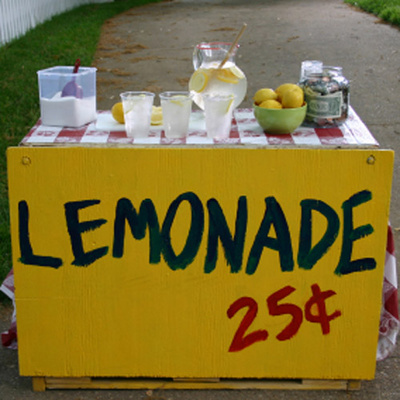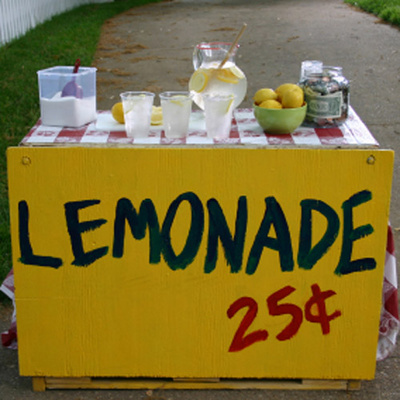Topics:
Inbound MarketingSubscribe now and get the latest podcast releases delivered straight to your inbox.
Tips for Developing Your Winning Pricing Strategy

Feb 12, 2013

 It doesn’t matter how great your product is or how wonderful your lead nurturing methods are. If the price isn’t right, no one’s going to buy from you.
It doesn’t matter how great your product is or how wonderful your lead nurturing methods are. If the price isn’t right, no one’s going to buy from you.
We don’t really talk about pricing schemes all too often, but the fact of the matter is that if you aren’t pricing your products or services properly, you’ll either be selling yourself short or lose customers because the price of the product is too high for its perceived value.
We’ve told you how to properly nurture leads in our free ebook “How Successful Businesses Generate Leads From Their Website”, so now it’s time to look another important component of your marketing scheme - your sales strategy - and see if we can help ensure that you’re not making a big pricing faux-pas.
Developing Your Pricing Strategy
Selling Money Over Memories
Too many businesses out there want to place a lot of focus on how much money their customers can save by choosing or using their products, but in most cases, this sort of sales scheme is just setting you up for failure.
For starters, it’s almost impossible to always offer “the lowest price” without losing money, so that right there is a problem.
Secondly, we’ve talked about how emotional connections are what will sell your products, and we’re going to say the same thing again. People will buy, and continue to buy, because of the emotional experience it brings.
Once someone feels a personal connection with a product or service, they are far more likely to invest in that product time and time again because they want to revisit that memory or the feelings they’ve attached with it (i.e. they may buy a certain type of beer because it reminds them of that fun, relaxing barbeque last summer, or consequently they don’t buy that brand of vodka anymore because it made them terribly sick at last year’s Christmas party.)
Additionally, sometimes the emotional connection or a memory with a product will override its price. Generally though, you get what you pay for and ultimately, repeat customers pay to have the same experience they had previously if they had a positive one. Think of it as customers buying a guaranteed experience rather than a product or service.
One easy way to help establish that emotional connection with your products or services is to come up with a catchy yet simple slogan. Slogans help companies suggest to their buyers what sort of memories and emotions should be associated with a product.
In turn, people then take that company’s implicit suggestion and create their own “feel good” emotional memories and attachments to that product, thus making them more likely to purchase that product again in the future.
Comparative Pricing Faux Pas
A Stanford University study revealed that if you tell your leads to compare your prices with the competition – without really telling them why they should be doing so – can harm your business. Why? Because it decreases your leads’ trust in you and your brand.
As the head researcher said, “The mere fact that we had asked them to make a comparison caused them to fear that they were being tricked in some way.” (Standard Business, 2005). As we talk about in our lead nurturing ebook “How An Inbound Marketing Agency Does Lead Generation”, trust is what’s going to make or break your ability to sell online, so any crack in that ever so important foundation can kill your business.
So how can you avoid making this common faux pas? Rather than outright telling your leads to compare prices, or even mention the competition at all, tell leads why they should buy your product.
Make a point to advertise just what sort of value they can expect to get from your product. Though you don’t have to say it directly, check out what sort of products that your competition is offering and come up with ways to imply why your products are better than theirs. Customers will figure it out, even if it’s by trial and error.
Failure to Use the Power Of 9
We were pretty surprised ourselves when we read a study from Quantitative Marketing and Economics that shows that having a price that ends in the number “9” is still more effective than any other type of pricing out there.
In one example they compared price points $34 and $39 for a piece of clothing. Despite $34 obviously being less expensive than $39, the same article of clothing for $39 outsold the $34 price by an insane 24%!
Does this mean that you should price all of your products so that they end with a 9? We say that it couldn’t hurt! But the most important thing to take away here is to pay attention to the trends, habits, and responses of your customers.
Not all of you are selling clothing or tangible items where it may make more sense to add .99 to the end of every price. So what you should do is simply pay attention to what your customers are saying to you. Maybe you’ve priced items at flat dollar amounts like $34 and some at $34.88 and the latter works.
Whatever your customers respond to best is what you should give back to them. You don’t have to know why or how it works so much as you first need to see that it works. Again, that’s creating familiarity and comfort by giving them the experience they previously had.
Not Offering a“Middle Ground” Price Point
You may think that everyone’s looking for a bargain, but this couldn’t be further from the truth. As a matter of fact, most spenders are really looking for mid-quality, mid-priced stuff – which is why you need to be taking advantage of offering multiple price points, whenever possible.
Studies have regularly found that if you offer a middle ground price for the same product, most buyers will splurge a bit to buy the mid-priced option and avoid buying the lower-end option, but will be less likely to buy the higher priced option. One study that proves this to be true is a study from the book Priceless. The study first started by offering two types of beer:
- Regular beer at $1.80 a pint
- Premium beer at $2.50 a pint
20% of people bought the regular beer at $1.80, while 80% then purchased the premium beer at $2.50. Pretty good, right? But then when a third beer at $1.60 was introduced, more individuals (80%) purchased the $1.80 beer, and only 20% bought the $2.50 beer.
Now here’s where it gets even more interesting. Replace the $1.60 beer with a higher priced beer at $3.40, and the numbers changed again in favor of the $2.50 beer:
- 5% bought the $1.80 beer
- 85% bought the $2.50 beer
- 10% bought the $3.40 beer
By having three options and offering a higher priced beer, this study was able to increase sales of their $2.50 beer by 5%.
Middle of the road is where it appears to be at – it’s comfortable and everyone wins. In a fear of ‘getting what you pay for’ and having a negative experience due to a cheap product or service, customers can opt for the mid-price range, and can therefore comfortably sacrifice the gamble of paying the highest price and still being disappointed.
It’s a perfect compromise between what customers believe to be generally true (that the cheapest will be bad) and the fear of being duped (paying too much for something that isn’t worth it.)
Of course the ultimate strategy is to have a product or service that’s ‘priceless,’ and you don’t have to have Visa’s marketing budget to figure out how to do that.


Order Your Copy of Marcus Sheridan's New Book — Endless Customers!